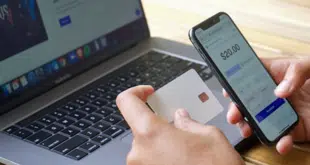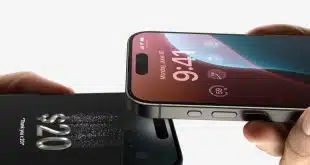Often overlooked as the trend toward mobile payments picks up steam is the extent to which mobile phones, and especially smart phones, influence transactions even if they aren’t used to consummate them. The most recent example of this notion is a finding by IDC Retail Insights that 28% of consumers’ holiday-season spending this year will come from people who are habitual smart-phone users.
Based on an estimate from the National Retail Federation that consumers will shell out $447 billion over the holidays, that 28% comes to $127 billion. “That’s an eye-popping number,” says Greg Girard, program director of merchandise strategies at IDC Financial Insights.
Very few of these “mobile-shopping warriors,” as the Framingham, Mass.-based research firm calls them, will actually use their phones to make a payment—only some 8% would be inclined to do so, according to the firm’s survey. “A very small fraction [of the $127 billion] will be transacted on a smart phone,” Girard says.
But the device, along with a plethora of shopping-related apps and offers, will play a key role in sparking that spending. Girard cites phone-based actions such as comparing prices, browsing product reviews, and searching for products at nearby stores as examples of how smart phones can influence spending, even if the actual transactions occur at a conventional cash register. “The influence [of smart phones] is well beyond the actual purchase activity,” Girard says.
A critical factor is the phone’s portability. “You can do all these things in a store in an aisle,” says Girard. Armed with competing prices at the same merchandise at nearby stores, for example, consumers can ask store associates to match the lowest price shown on their smart phone’s screen. Haggling over price has become more common since the recession set in three years ago, Girard says. “People were emboldened to do that during the hard times,” he notes.
The mobile experience can also affect a consumer’s attitude toward a retailer. Many retail sites are not yet optimized for mobile browsing, Girard points out, making for a frustrating experience as consumers try to navigate a conventional Web page on a smart-phone screen. And, as for using the device to make a payment, “there are still some concerns about security,” he says. But a salient result of the IDC survey is that mobile shopping is likely to develop much faster than e-commerce or even social networking did, Girard notes, leaving merchants and payments processors with little time to adjust technology and marketing plans.
For its survey, which it conducted in September, IDC canvassed more than 1,000 U.S. consumers age 19 and older. Some 73% of those surveyed were members of Facebook or other social networks, and 68% owned smart phones. The mobile-shopping warriors, Girard says, were those who “use smart phones easily and often.”





